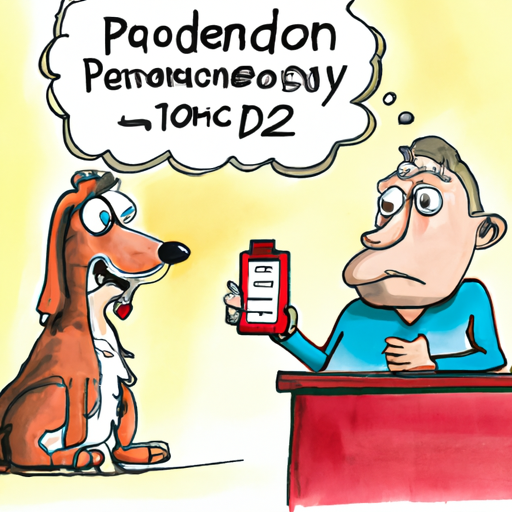When it comes to treating our furry friends’ health conditions, prednisone is a commonly prescribed medication by veterinarians. Prednisone is a synthetic steroid that mimics the natural hormone cortisol, and it’s used in dogs to reduce inflammation, control allergic reactions, and manage autoimmune diseases. But, as a caregiver, you might wonder, how long does prednisone stay in a dog’s system?
Table of Contents
- Understanding Prednisone
- How Prednisone Works in Dogs
- The Duration of Prednisone in a Dog’s System
- Factors Influencing Prednisone’s Duration
- The Side Effects of Prednisone
- Frequently Asked Questions
Key Takeaways
- Prednisone is a commonly used steroid in dogs to manage a variety of health conditions.
- The duration of prednisone in a dog’s system is influenced by various factors.
- Side effects can occur, so monitoring your dog’s response to prednisone is crucial.
Understanding Prednisone
When our canine friends are suffering from inflammation, allergies, or autoimmune diseases, veterinarians often prescribe prednisone. This medication is a corticosteroid, a type of drug that mimics the effects of cortisol, a hormone naturally produced by the adrenal glands of dogs. Prednisone is a potent anti-inflammatory and immune suppressant, making it highly effective for a variety of conditions.
To learn more about the types of conditions treated with prednisone, you can refer to this page at OneTopDog.
How Prednisone Works in Dogs
Prednisone works by suppressing the immune system, reducing inflammation and other symptoms associated with various disorders. Once ingested, it’s converted by the liver into prednisolone, the active form of the drug.
The Duration of Prednisone in a Dog’s System
Prednisone is rapidly absorbed in a dog’s system – usually within an hour of administration. However, the duration it stays can vary. On average, half of the drug is excreted from a dog’s body in about 1 to 2 hours. That said, it might take up to 24 hours for the drug to be completely eliminated from the system.
Factors Influencing Prednisone’s Duration
The duration of prednisone in a dog’s system can be influenced by several factors:
- Age: Older dogs may have slower metabolic rates, which can delay the elimination of prednisone.
- Health: A dog’s overall health and liver function significantly impact how fast prednisone is processed and eliminated.
- Dosage and Frequency: Higher doses or frequent administration can cause the drug to remain in the system longer.
For a more detailed explanation on how to administer prednisone to your dog, visit this link.
The Side Effects of Prednisone
While prednisone can be beneficial, it’s also associated with several side effects. These can range from mild symptoms like increased thirst and urination, to more severe issues such as potential liver damage or development of Cushing’s disease with long-term use.
It’s essential to monitor your dog closely while they’re on this medication. For more information on the potential side effects, you can visit here.
Frequently Asked Questions
1. How long does it take for prednisone to work in dogs?
Typically, prednisone will begin to work within a few hours of administration. It reaches peak effectiveness in 1 to 2 hours.
2. Can I stop giving my dog prednisone abruptly?
No, it’s important not to suddenly stop giving your dog prednisone. This could lead to withdrawal symptoms or a relapse of their condition. Always consult with your vet for a proper weaning schedule.
3. Is prednisone safe for my dog?
Yes, when used under the guidance of a veterinarian and according to their directions, prednisone is generally safe for dogs. However, it’s essential to monitor for side effects and keep your vet informed of any changes in your dog’s condition.
Remember, as caregivers, our pets’ wellbeing is our utmost concern. Knowing how long prednisone stays in a dog’s system can help us understand the medication better and manage potential side effects. It’s always beneficial to have a detailed conversation with your vet about the prescription, possible side effects and the best way to administer the medication.



